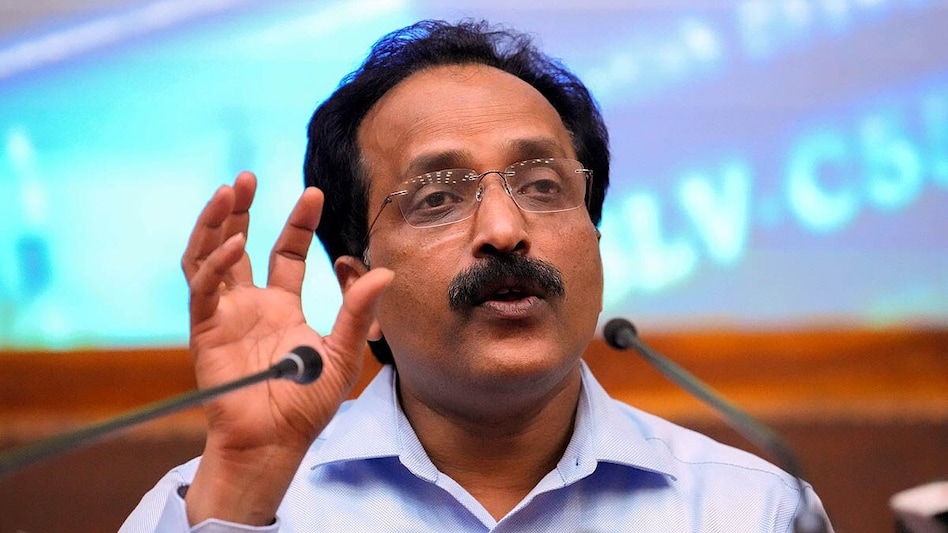 Hypersonic threats drive call for hundreds of Indian defence satellites in continuous orbit: S Somanath
Hypersonic threats drive call for hundreds of Indian defence satellites in continuous orbit: S Somanath
 Hypersonic threats drive call for hundreds of Indian defence satellites in continuous orbit: S Somanath
Hypersonic threats drive call for hundreds of Indian defence satellites in continuous orbit: S SomanathAs aerial and cyber fronts reshape modern combat, space has emerged as the decisive domain for national defence. Former ISRO chief S. Somanath warned that without a massive satellite boost, India’s armed forces risk blind spots in crisis, an unacceptable vulnerability in an era where wars play out above the clouds.
Speaking on a recent episode of the podcast From Code to Culture, Somanath emphasised, “The importance of space for defence has been understood very well now. It has been demonstrated very well in some of the recent conflicts. For example, the Ukraine conflict. It has shown it very well how it played a role, and recently in India also.”
He then turned to one of the most urgent modern threats, hypersonic missiles, and the need for a corresponding leap in space-based surveillance. “The hypersonic missiles are very difficult to intercept using standard technologies. You need an observation that is going to come from another domain. So you need to observe deep into the terrain of other nations, even before it starts, and you need to be aware of it,” he explained.
“It started with radars or deep, powerful radars. But now, recently, America has announced that they are going to create a 500-satellite constellation for looking at a dome for the Americans against missile attack, especially hypersonic missile attack. Dome is nothing but an early warning system and a neutralising system. So if a missile is coming to your terrain, you should be able to know about its origin, its progress and likely impact point and you should be able to launch a countermeasure so as to neutralise it before it hits.”
He highlighted that over half of future space-based applications will be defence-oriented, adding, “More than 50% of the space-based applications will be in defence.” As state-backed military programmes come to dominate the economics of space, he cautioned that India must not remain dependent on commercial or foreign satellite services during crises.
“Not only our satellites, but we had support from other satellites which are commercially available. Everyone can get them. So if you are to really become truly independent, we need to have our own,” Somanath said.
He explained that a handful of satellites would not be enough to meet the demands of real-time defence surveillance. “The number of satellites that are serving the segment has to increase. In my opinion, it needs to be in hundreds because the structure of the satellite is such that they are not standing on top of the nation. They are moving around the Earth very fast. So once they observe, they go away. Their period of observation is hardly 15 minutes, and the next satellite should come immediately to cover that area.”
To maintain constant coverage, Somanath said India would need a constellation of hundreds of satellites, similar to the U.S. plan for a 500-satellite early warning system. He added that diversity in satellite capability is equally important: “We need not only optical, we need to have night visibility, thermal imaging, radar imaging, multispectral imaging, hyperspectral imaging. Various technologies should come in.”
With such a large constellation, vast volumes of data will flow in, necessitating intelligent analysis. “You also need to have coordination between the satellites. And when you have so many satellites, you get that much information also. When that much information comes, you must have mechanisms to analyse the information and give the essence of it to the people who make decisions on the ground,” he noted.
According to Somanath, this is where AI becomes essential: “For example, AI-based tools should run on top of this data to process it and give information for decisions or actions on the ground to happen. And you also must have network-centric control of equipment based on these inputs.”
He further pointed out the human readiness aspect: “You also need people who can handle this. The people in the defence are also not [yet fully equipped], they have to be trained and equipped to handle such complex technologies.” He warned that satellites themselves are now strategic assets and targets. “You have to protect your own satellites because the satellites are also a war occupant,” he said.